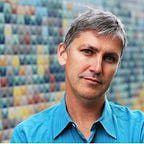Model S In The City
Like a lot of people I know, I’ve been watching the extended dispute between Tesla CEO Elon Musk and The New York Times, sparked originally by Times reporter John Broder’s devastating account of a Tesla Model S test drive up the eastern seaboard that ended with a lifeless car being dragged onto a flatbed truck. I don’t want to get into the almost Talmudic analysis of the car logs that both sides have generated to make their case. It does seem relatively clear that Broder could have easily made the trip if he had simply charged the car to 100% each time he used one of the free, solar-powered Supercharger stations. And yet it seems unlikely to me that Broder deliberately undermined the experiment, as Musk has contended.
What’s more interesting to me is one fact that seems to be uncontested: Broder’s decision to leave the car overnight in cold weather without plugging it in caused it to lose more than two-thirds of its range when he turned it back on in the morning. To be fair, about half of that lost range appears to have been restored after warming up the battery. But the overnight loss raises an important question about the viability of electric vehicles in an environment that should be well-suited for them: big cities.
Most use cases for electric vehicles ultimately end at the same destination: the car plugged into a garage outlet overnight. With most Model S models sporting range of more than 200 miles on a single charge, early adopters can comfortably drive extensive work commutes — not to mention soccer pickups and date nights — as long as they remember to plug the car in before bedtime. For most Americans, this is a small price to pay, given the fuel savings and the ease of never going to a gas station again. (Yes, the Model S is too expensive for most Americans to consider buying, but the company is actively developing a low-cost EV for which all the same issues will apply.) But there’s one key demographic where this model breaks down: big city dwellers (mostly New Yorkers, I suspect) who park their cars on the street.
My wife and I lived in Manhattan and Brooklyn for twenty years, and for the decade or so where we had a car, we parked it on the street continuously, since our brownstone didn’t have a driveway or garage. This shouldn’t necessarily be a problem for Tesla, because city living dramatically reduces the number of miles you need to travel on the average day. During our Brooklyn years, would regularly go three or four weeks without having to fill up the gas tank. Assuming Tesla installs a few Superchargers inside the city proper, the Model S (and its lower-cost descendants) could be an incredible city car. You’d only need to block out an hour or so every month to recharge the battery — and even then you’d get the energy for free, energy that had itself been generated entirely from solar panels. Convenient, cost-effective, and good for the planet. What’s not to like?
But that equation changes dramatically if the car is going to lose half its charge overnight during the winter. If that’s the case, city dwellers are going to be scrambling to find a plug every other day instead of once a month. I suspect it would be a deal-breaker for most people, or at least force them to pay for a space at a local garage, which in New York can be as costly as renting an entire apartment in smaller American cities. The Bloomberg administration has announced plans to install hundreds of of plug-in parking spaces around the city, and no doubt the private sector will expand the EV options as more people start driving without fossil fuels. But those cold winter nights are going to make it challenging for street parkers, assuming Tesla can’t figure out a way for its cars to maintain charge without having to plug in somewhere.
It’s possible that street parkers in New York City (and a handful of other downtowns around the U.S.) are a small enough market that Tesla can write them off and still have a breakaway hit car. But I would think the same issues would apply to the cities of Northern Europe: wealthy, environmentally-conscious,with cold winters and a comparable scarcity of parking garages and driveways. It doesn’t help Tesla’s situation that metropolitan residents are more likely to have the cash and the green politics that might encourage them to buy a Model S. Right now, it’s a car designed to appeal to the sensibility of big city drivers that works best within a suburban lifestyle.
Of course, the Model S should work great for big city residents in warm-weather climates, which shouldn’t surprise us, given the company’s Bay Area roots. Maybe if Tesla really wants to capture the urban audience, they should send their engineers to downtown Detroit for the winter.
